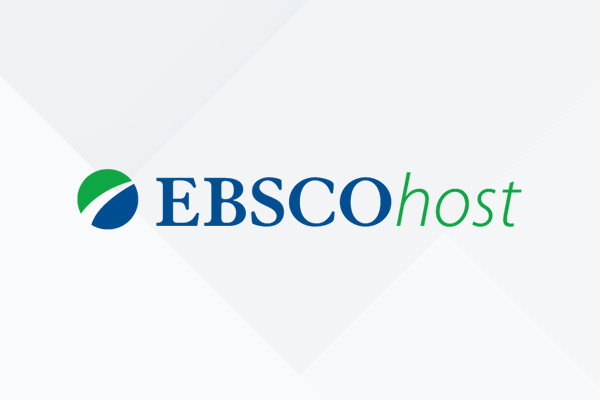Öz
Anahtar Kelimeler
Kaynakça
- Atik, H. (1996).”Sanayi-Sonrası Toplum Sürecinde Avrupa Birliği”, (Yayınlanmamış Doktora Tezi), Kayseri: Erciyes Üniversitesi Sosyal Bilimler Enstitüsü.
- Atik, H. and Tanna, S. (1997). “Infomıatisation in the EU: An Empirical Analysis”, Paper Presented to METLİ Conference on Economics. Ankara: METU.
- Bell, D. (1973). The Corning of Post-lndustrial Society: A Venture in Social Forecasting. Nevv York: Penguin Books.
- Cooper, M. D. (1983). “The Structııre and Future of the Information Economy”, Information Processing and Management, 19, 1, pp.9-26.
- Crawford, R. (1991). In the Era of Humarı Capital. New York: Harper Collins.
- Dordick, H. S. and Wang, G. (1993). The Information Society: A Retrospective View. Califomia: Sage Publication.
- European Economic Interest Grouping. (1996). European Information Technology Observatory 1996. Frankfiırt/Main: European Economic Interest Grouping.
- Machlup, F. (1962). The Production and Distribution of the Knowledge in the United States. Princeton, NJ: Princeton University Press.
- Masuda, Y. (1981). The Information Society: As Post-industrial Society. Bethesda: World Future Society.
- OECD. (1981). Information Activities, Electronics and Telecommunication Technologies. Paris: OECD.
- OECD. (1986). Trends in the Information Economy. Paris: OECD.
- OECD. (1995). Main Science and Technology Indicators 1995/1. Paris: OECD.
- OECD. (1995). Education At a Glance. Paris: OECD.
- Poirier, R. (1990). “The Information Economy Approach: Characteristics, Limitations, and future Prospects”, The Information Society, 7, pp.245-285.
- Porat, M. U. (1977). The Information Economy: Defınition and Management. US Department of Commerce.
- Rubin M. R. and Huber, M. T. (1986). The Knowledge Industry in the United States 1960-1980. Princeton, NJ: Princeton University Press.
- State Planning Organization. (December 1997). Economic and Social Indicators (1950-1988). Ankara: State Planning Organization.
- UNESCO. (1995), Statistical Yearbook 1995. Paris: UNESCO.
Öz
Advanced countries, especially the US and Japan, have transformed from industrial society to the information society since 1950s. In this new society, information and knovvledge have been important for innovation and policy fonnulation. As a result, information and knovvledge1 production activities in the advanced countries have increased. These developments have led to the quantification of information production in the information societies.
This article aims to analyse the studies related with the measurement of the share of the information sector in GNP. Additionally, it aims to analyse the size of the information related activities in Turkey in comparison with other countries. The comparisons for Turkey have indicated that the contribution of the information related activities to GNP in Turkey was lovver than that of the other countries.
Anahtar Kelimeler
Kaynakça
- Atik, H. (1996).”Sanayi-Sonrası Toplum Sürecinde Avrupa Birliği”, (Yayınlanmamış Doktora Tezi), Kayseri: Erciyes Üniversitesi Sosyal Bilimler Enstitüsü.
- Atik, H. and Tanna, S. (1997). “Infomıatisation in the EU: An Empirical Analysis”, Paper Presented to METLİ Conference on Economics. Ankara: METU.
- Bell, D. (1973). The Corning of Post-lndustrial Society: A Venture in Social Forecasting. Nevv York: Penguin Books.
- Cooper, M. D. (1983). “The Structııre and Future of the Information Economy”, Information Processing and Management, 19, 1, pp.9-26.
- Crawford, R. (1991). In the Era of Humarı Capital. New York: Harper Collins.
- Dordick, H. S. and Wang, G. (1993). The Information Society: A Retrospective View. Califomia: Sage Publication.
- European Economic Interest Grouping. (1996). European Information Technology Observatory 1996. Frankfiırt/Main: European Economic Interest Grouping.
- Machlup, F. (1962). The Production and Distribution of the Knowledge in the United States. Princeton, NJ: Princeton University Press.
- Masuda, Y. (1981). The Information Society: As Post-industrial Society. Bethesda: World Future Society.
- OECD. (1981). Information Activities, Electronics and Telecommunication Technologies. Paris: OECD.
- OECD. (1986). Trends in the Information Economy. Paris: OECD.
- OECD. (1995). Main Science and Technology Indicators 1995/1. Paris: OECD.
- OECD. (1995). Education At a Glance. Paris: OECD.
- Poirier, R. (1990). “The Information Economy Approach: Characteristics, Limitations, and future Prospects”, The Information Society, 7, pp.245-285.
- Porat, M. U. (1977). The Information Economy: Defınition and Management. US Department of Commerce.
- Rubin M. R. and Huber, M. T. (1986). The Knowledge Industry in the United States 1960-1980. Princeton, NJ: Princeton University Press.
- State Planning Organization. (December 1997). Economic and Social Indicators (1950-1988). Ankara: State Planning Organization.
- UNESCO. (1995), Statistical Yearbook 1995. Paris: UNESCO.
Ayrıntılar
| Birincil Dil | İngilizce |
|---|---|
| Bölüm | Makaleler |
| Yazarlar | |
| Yayımlanma Tarihi | 30 Haziran 1999 |
| Yayımlandığı Sayı | Yıl 1999 Sayı: 14 |













ERÜ İktisadi ve İdari Bilimler Fakültesi Dergisi 2021 | iibfdergi@erciyes.edu.tr
Bu eser Creative Commons Atıf-Gayri Ticari-Türetilemez 4.0 Uluslararası Lisansı ile lisanslanmıştır.


